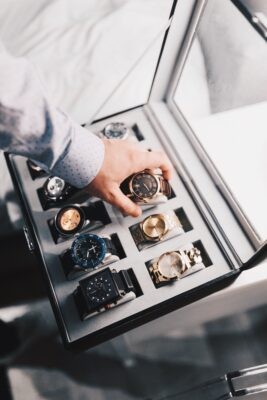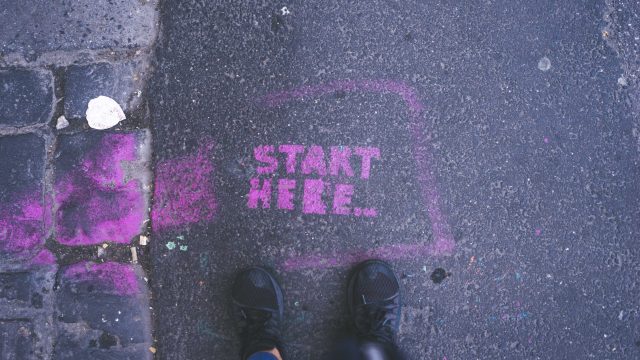“Collectible” conjures up images of all sorts of nostalgic things – dusty old photo albums, figurines your grandmother might have had up on her windowsill – but actually, on Amazon, in some cases “collectible” basically means “anything you can get away with selling at a vastly inflated price”.

This is one of those little-known loopholes that some unscrupulous sellers have been exploiting to make a lot of money – and in truth, Amazon isn’t really doing much to stop it. In this article we take a deep dive into the practice of collectible price gouging, and what you can do about it if you see it happening.
A brief intro to the “collectible” condition
Amazon has a specific product condition that is designed for rare or unique items. Think trading cards, figurines, old books, sculptures, fine art, etc. These items would all fit into the “collectible” condition either because they are rare, they have an inherent value over and above what a brand new, similar item would have, or they have some kind of historical significance.
It’s important to note that “collectible” is not a category – it’s an item condition that you would likely use in place of “used” or “new.” Some categories of collectible items are gated categories, meaning sellers need to gain approval from Amazon in that category before they can sell anything. Amazon also provides guidelines on how you should grade your collectibles – either as “Mint”, “Like New”, “Acceptable” or “Poor”. Collectibles are often sold with a proof of authenticity or a certificate affirming that they are the real thing.
However, one notable thing about collectibles on Amazon is that items marked as “collectible” can get around Amazon’s price ceiling. This is an artificial cap that Amazon sets so that a particular product can’t be sold over a certain amount. This can lead to some sellers listing products as collectibles which really aren’t, in an attempt to get around this policy and list items for more than Amazon allows.
Amazon’s policies on price-gouging
As we’ve mentioned, Amazon applies price-capping for all conditions except “collectible”. This policy makes sense if you take it at face value because the prices of collectibles aren’t dictated by Amazon – they’re dictated by what the market will pay for them. New items are only ever going to have a set price – and that’s usually the RRP, unless the seller has chosen to apply a discount.
For example, a Samsung 32” TV in brand new condition is only ever going to be worth it’s RRP – say in this case it’s $500. If a seller tries to sell this for $2500, Amazon will stop them – as the item plainly isn’t worth that much, and Amazon can verify, with the data they have out there on other retailers and other Amazon sellers, what is a fair price for the item. A collectible isn’t like this, however – you could have a book which maybe sold in 1950 for $1, but if you tried to sell this privately now it may be worth $1000 to the right person. Amazon can’t realistically dictate what the value of a collectible item is, so they apply no price cap.
This presents a problem, however – because there isn’t really anything to stop a seller taking a toaster, for example, setting it as collectible and trying to charge 10x the RRP. If demand is high and supply is low, someone may just end up paying that much for the toaster – vastly inflating the seller’s profit margin. While this isn’t necessarily illegal (although depending on where you live, it might be) it is highly immoral and unethical, and if Amazon catches sellers doing this they will likely issue a ban.
Some real world examples
One of the best examples of this was during COVID-19 where supply chains dried up and consumers had enormous difficulty getting hold of certain items. What’s more, with everyone stuck at home, there was a boom in some products – particularly in home fitness and exercise products.
One of the most prominent examples of this was a particular set of dumbbells made by BowFlex. In March 2020 these dumbbells were selling on Amazon for just under $300. By May 2020, the same weights had been listed as “collectible” and were listed for nearly $1300. And because the price capping algorithm doesn’t look at collectible items, this seller got away with this (until they were reported and had the listings taken down.)
There were lots of other examples of this – some of the most significant was a $260 USB cable and a $250 bread maker (worth about $90).
Amazon no longer contractually obliges sellers to list their products cheaper on Amazon than elsewhere (this policy used to be known as “price parity” but it was scrapped in 2019), and as other sellers stock out, the lack of oversight on collectible products just allows the unscrupulous sellers who do have stock to effectively charge what they want – the reasoning being that someone, somewhere will pay for it.
Why Amazon’s pricing policy isn’t perfect
You may be reading this thinking “well if someone’s willing to pay for it, why stop them?” It turns out that a lot of other sellers are thinking this too, and certainly on the Amazon Seller Central forums there are quite a few people complaining about the price capping strategy.
For example, we found quite a few complaints where another seller had listed a similar but not identical product, and other sellers were then being told that the price they had previously sold their product for was now too much, they needed to bring it down below a threshold and that threshold was actually below cost for them – meaning to sell at a price Amazon felt was fair to the consumer, they would be making a loss.
What’s more is that when Amazon thinks that you have listed something for more than you should have, it will apply a violation of their Fair Pricing Policy to your account, which can impact your seller health. It’s also possible for Amazon to suppress listings in cases where it thinks a seller has the price incorrect – there have even been instances where Amazon has suppressed a seller priced at $35 when another seller has priced at $33.
Amazon’s enforcement of the Fair Pricing Policy seems to have stepped up in recent years, and more and more sellers are falling foul of it. Amazon will give you a suggested price in Seller Central, along with an upper and lower band (which is effectively what any Amazon repricer tool will look at) but if this is way below cost for you, you may find that you’re unable to sell your stock profitably. Be very careful.
How to report fake collectible listings if you see them
Going back to the point of this article – if you find anyone committing collectible price gouging it’s in your interest and the interest of your customers to report them. The more reports that are made, the more chance there is of Amazon actually doing something about it – even today, in 2023, there still seems to be no real update to Amazon’s algorithm that allows sellers to do this.
You shouldn’t do this in the same way a customer would report the seller – there’s a specific process you need to go through in order to ensure Amazon will thoroughly investigate the violation.
- Go to the seller’s storefront and click “report abuse”.
- Select the type of violation – in this case, a pricing violation.
- Add in the order ID or the ASIN/ISBN – whichever is applicable.
- Give Amazon the store or business name you are reporting.
- Give an explanation to Amazon of how you feel this seller is violating the pricing policy. You can also give Amazon any documentation you feel might help.
Don’t feel bad about reporting sellers who are doing this – they are damaging consumer trust in Amazon, which affects everyone trying to do business there.
Frequently asked questions (FAQs)
What are the consequences for sellers found to be committing price gouging?
We can’t speak to all the consequences a seller might face but we suspect the initial action would be a removal of their listing. If a seller is found to be repeatedly in violation of the fair pricing policy, their account is likely to be suspended. Amazon could also revoke buy box privileges, or even withhold funds in serious cases.
Are there legal implications for sellers found doing this?
Yes. Amazon usually chooses to handle violations of its policies internally but they have been known to collaborate with law enforcement on occasion. There haven’t been any recorded incidents of Amazon trying to sue someone for price gouging, but this alone should be enough to scare you off trying it if you were thinking about it.
You must also consider that if someone was aggrieved enough to privately sue a seller for this practice, and Amazon was subpoenaed for information, they would almost certainly provide it.
Can Amazon differentiate between genuine collectible price surges and price gouging?
We could find nothing in Amazon’s policies about this. While it’s likely that Amazon’s combination of automated systems, manual review processes and of course, its algorithm, will help them to monitor pricing among Marketplace sellers, it’s unfortunate that there’s often very little context behind genuine collectible price surges and unscrupulous sellers attempting to price-gouge. Amazon’s algorithm may look at historical data, it may also look at other platforms to compare (such as eBay) or it may even look at the nature of the product – for example, during an emergency when prices of hygiene or surgical products increase, this is more likely to be price gouging than it is genuine collectible price surging.
All of this is speculation – we really don’t know how Amazon’s algorithm works. However, to answer the original question – we suspect Amazon has its ways, but given what some sellers are getting away with, we doubt that whatever Amazon is doing is particularly effective.
What does Amazon mean by collectible?
There isn’t really a set definition – anything that’s rare or unique could be considered a collectible and therefore eligible to be classed as “collectible” on Amazon. Generally, though – collectibles are things like old coins, stamps, sports memorabilia (such as signed photos or jerseys), rare books or first editions, antique jewelry or unique artifacts.
Is this considered predatory pricing?
No – if anything it’s the opposite. Predatory pricing refers to selling something at such a low price that you couldn’t possibly be making a profit. Larger companies with huge cashflow can afford to do this. Smaller sellers cannot – so gradually the smaller companies go out of business, allowing the remaining, predatory company to name their price as there’s nobody left for them to compete with.
The practice we describe in this article where we refer to sellers inflating the prices of items by classing them as “collectible” is simply price-gouging – taking advantage of supply chain problems to gain a profit.
More strategy
-

6 steps to becoming an Amazon seller. No experience needed.
Becoming a successful Amazon seller is easy - the Amazon brand and logo represents…
-

Top tips for success from a new Amazon seller
We've compiled a list of the top tips for new sellers, gathered from a…
-

How to get ungated on Amazon – your guide to Amazon restricted categories
If you’re looking to expand your online arbitrage business, you might find yourself tempted…
-

How to prepare for Amazon Q4 trading
Every year the holiday season seems to come around a little earlier. As an…




